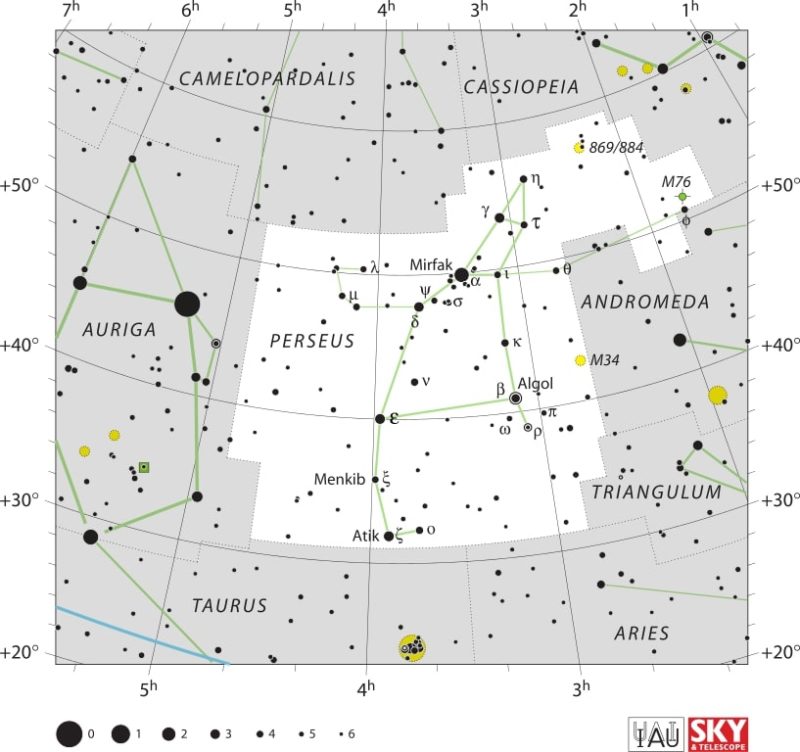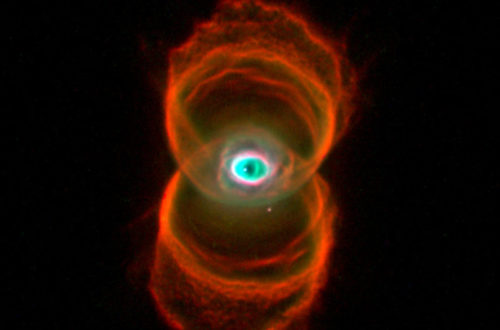Perseid Meteor Shower Viewing Tips

The Perseid meteor shower is one of the most anticipated annual celestial events. Every time Earth passes through debris left behind by Comet Swift-Tuttle, the night sky is enlivened by fast, bright streaks.
As with many meteor showers, the Perseids are best viewed after midnight under a clear and dark sky. On the peak, average viewers see 150 meteors per hour, with some years producing significantly more. The Perseids are well-liked because of favorable August weather.
This comfortable temperate climate allows for convenient viewing from backyards, parks or fields. Indeed, for many, the Perseids are the number one summer sky spectacle.
What Are the Perseids Exactly?
The Perseid meteor shower is among the most dependable and visually spectacular of our annual sky events. It occurs when Earth crosses a stream of debris left behind by the Comet Swift-Tuttle. Once a year, between mid-July and late August, skywatchers in the Northern Hemisphere can watch bright streaks of light dashing across the nighttime sky.
These beautiful pyrotechnic displays inspire amazement, fascination and excitement. They are incredibly important to understanding all things comet, meteor shower, and composition of our solar system related. The shower takes its name from the constellation Perseus, from which the meteors seem to radiate. Its peak, usually on or about August 12, is known to be able to show more than 150 meteors an hour.
Here’s a look at the science behind the Perseids. It also reveals the most intriguing tale that’s enchanted skywatchers for centuries.
Unpacking the Cosmic Dust Trail
The Perseids begin with a bang. As Comet Swift-Tuttle orbits the Sun, it leaves a trail of small debris. This cosmic environment is peppered with particles of rock and dust, some as small as sand grains, others as big as mountains.
As Earth passes through this stream of debris every August, the particles hit our atmosphere going 59 km per hour! The dust is mostly silicate rock and some carbon compounds, with trace metals that help shape the color of the streaks. Even more complicated, the density of this dust trail is not uniform.
Other regions hold a more dense trail of debris. This results in a higher percentage of meteors becoming visible when Earth intersects those denser streams. Astronomers monitor these variations to forecast how intense the shower will be in a given year. Those cosmic trails of dust make great meteor showers. They do, however, give scientists invaluable looks at how comets shed material and how debris moves through the solar system.
Meet the Parent: Comet Swift-Tuttle
Comet Swift-Tuttle (formerly designated as 109P/Swift-Tuttle) is the parent body of the Perseids. It was only discovered in 1862—though the meteor shower itself has been documented in history as early as AD 36. Swift-Tuttle’s orbit is gigantic and very elongated, bringing it around the Sun every 133 years.
As it returns, it sheds new trails of dust which contribute to the cloud of Perseids. Its passage in 1862 was equally seminal, as it was during this passage that astronomers first understood that meteor showers are associated with comets. Swift-Tuttle’s path happens to cross right along with Earth’s orbit, which is why we see the same meteor shower every year.
The comet has a fascinating past, as it returns frequently to our night sky. It’s closely tied to one of the most popular celestial events we like to experience.
Why Meteors Burn Up Brightly
As each tiny bit of the comet does, it wooshes into Earth’s atmosphere at a staggering rate of 59 km per second. As the meteoroid moves down towards Earth, the air in front of it gets compressed and starts to heat up.
This extreme heat makes a meteor shine and disintegrate well before it reaches the earth. That friction creates the beautiful, quick, bright streak—what most people would refer to as a “shooting star.” In fact, the color and brightness of a meteor depends on not only the speed but the chemical composition of the meteoroid.
Usually, most of the Perseids you would see are quite faint, but every so often, a larger piece comes in and produces a fireball. They burn up so bright that they often dazzle or even cast shadows.
Locating the Radiant Point Explained
The meteors appear to originate from a single point in the sky, called the radiant. The radiant doesn’t emit the meteors, it’s simply a visual effect. If you were to follow the streaks back in the sky, they all seem to come from that one spot—the Perseus constellation.
Understanding where the radiant is allows observers to orient themselves appropriately and gives astronomers insight into what direction the debris stream is moving.
How the Shower Changes Yearly
How many meteors you might see during the Perseids varies widely from year to year. In some years, the Earth passes through a denser section of the dust stream, resulting in an outburst with an increased number of meteors per hour. Some years, the shower is less impressive.
The Moon’s phase is important too—a bright Moon can wash out all but the brightest meteors. It’s true that weather and light pollution are factors as well. Outbursts, during which Perseid rates spike several times higher than normal, are rare but well-documented, typically associated with recent passages of Swift-Tuttle.
Understanding Meteor Composition
A meteoroid is a very small bit of rock in space. When it burns up as it streaks through our atmosphere, that’s a meteor. If a chunk makes it all the way down and lands on Earth, we call it a meteorite.
The Perseids are primarily cometary debris, composed of silicates, carbon, and metals such as magnesium and iron. The debris is relatively loose, allowing it to burn up quickly and brightly high in the atmosphere. These elements define the colors and patterns we observe in the shower.
Are the Perseids a Risk to Earth?
Are Perseids a danger to Earth? Most of the debris is burned up very high above the Earth. Only the largest pieces would make it to the surface, and even that is very rare for this shower.
So watching the Perseids from your driveway is completely safe, without a recorded instance of injury or property damage.
Best Ways to Watch the Perseid Meteor Shower
Planning ahead to catch the Perseid meteor shower can make for a spectacular experience, particularly for those who are smart enough to prepare in advance. The right timing and location will make all the difference in how many meteors you’re able to see! If you follow these simple, sensible tips, you’ll see more meteors and have a better time doing it.
Pinpoint Peak Viewing Dates
The Perseid meteor shower is active from July 17 to August 24 each year, but activity isn’t consistent the whole time. The peak, or when the most meteors will be visible, is on August 12, with rates of 150 or more meteors per hour in perfect conditions.
People who time their observing trips to these dates will have the best chance at seeing the shower’s peak activity. Being prepared is the most important part.
Escape City Lights: Find Dark Skies
Light pollution created by city lights will wash out all but the very brightest meteors. One of the simplest ways to increase your meteor tally is to escape city lights and find dark skies. Parks, rural fields, campgrounds, and national forests are your best bet for dark skies compared to cities.
Look for viewing sites that are at least 30 to 50 km away from the light dome of major cities. Once you arrive, let your eyes adjust and look up—you’ll notice the Milky Way and many more meteors than you would in town.
Give Your Eyes Time to Adjust
Your eyes need about 20 to 30 minutes to fully adjust to the dark. During this period, do your best to not look at bright lights such as cellular devices or oncoming car headlights.
Red LED flashlights are the best option for walking around without destroying your night vision. Once your eyes have adjusted to the darkness, the fainter meteors will be much easier to see. This patience is rewarded as the night progresses, with more meteors appearing for those who remain patient.
Most experienced meteor watchers feel the first half hour is just a warm-up. That’s when, they promise, the true spectacle starts, as your eyes adjust to deeper darkness.
Essential Comforts for Watching
With the right setup, meteor watching can be truly comfortable and enjoyable. Folding camping chairs or reclining lawn chairs allow you to recline and look up without straining your neck or back. Warm blankets or sleeping bags are a must, as nights can be quite cool—even in the summer.
Layered, comfortable clothing is a no-brainer, as temps can get quite chilly—especially in the early morning hours. Beyond the essentials, thermoses with hot drinks, bug spray, and a few snacks can go a long way.
Many people will even bring small pillows or, if they’re staying out all night, will rig up hammocks. These comforts help ensure that the experience remains magical, allowing you to focus on a breathtaking sky rather than on discomfort or sore, frozen muscles.
Check Your Local Weather First
Weather is the one thing that can ruin an outing to view the meteor shower. So no matter how many meteors are streaking overhead, clouds, fog, or haze will keep you from seeing them. Before you venture out, consult trusted weather apps or websites for your area.
If predictions do not seem promising, do your best to remain adaptable. Often, just a brief drive to another region will lead you to clear skies. Have a plan B, and be willing to pivot if you have to.
Dealing with Moonlight Interference
Moonlight can wash out the sky and make it difficult to see fainter meteors. A full or nearly-full moon casts bright light over the ground, similar to a streetlamp. This glare washes out all but the brightest of the meteors.
If the Moon is very bright, aim to place it behind a tree, hill, or convenient building. Try to view in the darkest part of sky possible, away from Moon. Timing your watch for when the Moon is below the horizon will help you see the most.
Capture the Magic: Perseid Photography
Each August, the Perseid meteor shower dazzles stargazers. This majestic occurrence draws in experienced astrophotographers and beginners alike, all wanting to capture the beauty of night sky photography.
This is a phenomenal opportunity to shoot some pure cosmic energy in one frame. Proper preparation, the proper tools, and a good sense of observation can take you a long way. By sharing meteor photos, everyone can join in, share their experiences, and remember the excitement well beyond the event itself.
To get those crispy shots, you’ll need a solid tripod. Meteors move fast, and even the tiniest movement will result in a blurry shot. A camera with manual controls is ideal; this allows you to adjust settings as the night sky changes.
Wide-angle lenses, such as a 14 mm, will capture more sky and increase your chances of tracking more meteors. For you smartphone-toting folks, definitely set your phone on a tripod and use the longest exposure time your phone can do—many of which have 30 second exposures these days.
If your radiant is high in the sky, frame it appropriately, but use some trees or mountains to anchor your shot and show scale. The wider the lens, the more meteors you’ll be able to capture in a single photo. Even small changes in angle can dramatically affect how much sky you have in your shot.
Plan on a multi-hour endeavor—meteors move fast and can be unpredictable. Shoot in burst mode.
Perseids in History and Legend
The Perseid meteor shower is unique for both its spectacular show as well as the tradition it has in culture and history. First recorded in A.D. 36, these meteors have fascinated observers for nearly 2000 years.
It ties in beautifully to a wealth of stories that continue to show us how humans have tried to understand and interpret the night sky.
The Famous “Tears of St. Lawrence”
The Perseids are at their best in early August, near the St Lawrence’s feast day of August 10. In Europe, the shower is known as the “Tears of St. Lawrence.” People believed the meteors to be tears falling for the saint, who had died on that day.
This association provided the occurrence with a divine quality, making every shooting star a representation of optimism and celebration, remembrance, and recovery. For some, viewing the shower became a beloved custom.
It turned a night spent under the stars into a deeply religious, cathartic and memorable experience.
Sky Stories from Different Cultures
In cultures around the world, the Perseids have interlaced with local traditions and legends. Indigenous legends associated with the Perseids in North America describe meteors as messages from spirits.
In ancient Greek culture, meteors were viewed as presents from Olympian gods. These stories are never just stories—they sometimes encapsulate ideas such as respect for nature and a sense of wonder at the unknown.
Though the details differ, stories from different places often show a shared awe for the night sky and its surprises.
Conclusion
Of all the annual meteor showers, the Perseid meteor shower is one of the most popular as it dramatically paints the night sky every August. Even under city lights, it’s possible to see a dozen or so if you visit a local park or open field. Take some pictures, or simply lie back on a blanket and enjoy the company of friends and family. The Perseids unite us, ignite our imaginations, and reconnect us with the broader universe above our heads. So mark your calendars for next summer’s peak. Reserve your place well in advance, pack a favorite snack for enjoyment under the stars, and let the skies speak for themselves. Share your best shots, advice, and experiences to pass the awe of the shower on to others.
Frequently Asked Questions
When is the best time to see the Perseid meteor shower?
The Perseids are an excellent meteor shower for beginners that peaks on August 12. To see as many meteors as possible, look after midnight and before dawn, preferably far from city lights.
Do I need special equipment to watch the Perseids?
It’s pretty simple, just use your eyes! All you need to do is bring a blanket or lawn chair, recline, and gaze skyward.
How many meteors can I expect to see per hour?
At peak activity, expect a rate of up to 150 meteors per hour under ideal dark sky conditions. If you’re in light-polluted areas, you can expect this number to be much lower.
Why are the Perseids so popular?
The Perseids are bright and fast meteors and they happen during warm summer nights. Their abundance, consistency and easy-to-see activity make them a classic for any skywatcher.
See also:
- Previous meteor shower: Eta Eridanid Meteor Shower
- Next meteor shower: Kappa Cygnid Meteor Shower
Would you like to receive similar articles by email?





